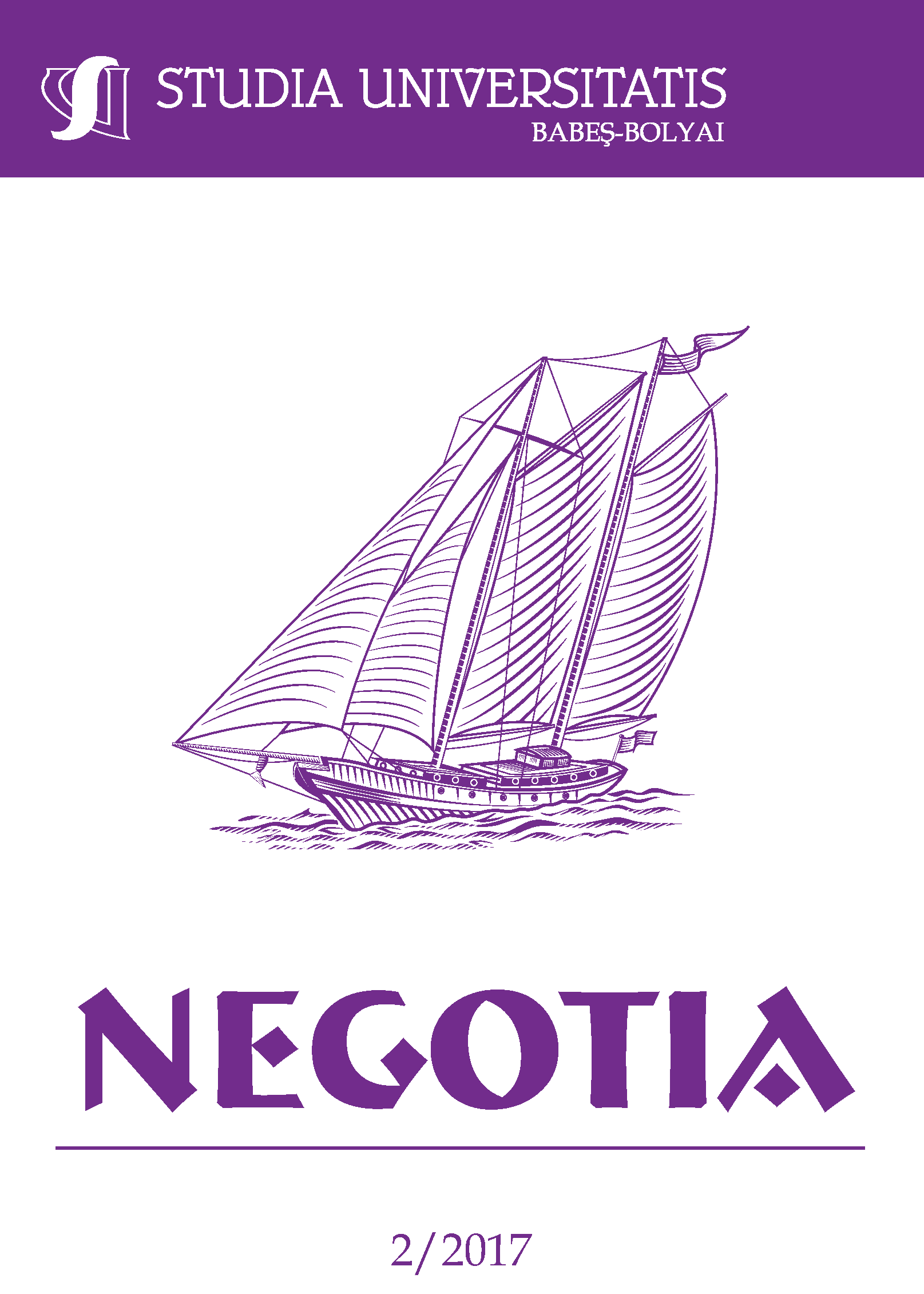FOREIGN ENTRY MODES OF HIGH-TECH FIRMS IN POLAND
DOI:
https://doi.org/10.24193/subbnegotia.2017.2.02Keywords:
internationalization of firms, born global, high-techs.Abstract
Objective: The main objective of the article is to present the role and importance of foreign entry modes in internationalization process and their key determinants. Research design and methods: A quantitative research design was used. A survey was conducted on the sample of 263 firms operating in high-tech industries in the territory of Poland. To verify the assumed hypotheses the statistical instruments were used including Chi-Square test and Cramer's V contingency coefficient. Findings: The investigated high-tech firms adopt a whole range of entry modes in their internationalization process. However, research results show that the choice of foreign entry modes is determined by the size of the company, pace of internationalization and internationalization intensity (measured by TNI index), namely bigger firms, born global and firms with high internationalization index are more likely to use more advanced and entry modes characterized by high-control. Implications and recommendations: Polish high-tech companies use more advanced entry modes in comparison with whole business population. Foreign entry mode choice is a multilevel phenomenon and it is influences by a multiplicity of factors. Thus, it is also difficult to investigate empirically. However, it provides significant future opportunities for further studies that bring us closer to understanding the phenomenon of entry mode choice decision. Contribution and Added Value: The research results presented in this article are one of the first in Poland investigating internationalization and foreign entry modes of firms operating in high-tech industries. The obtained results remain in line with the majority of empirical evidence world-wide.
JEL Classification: F23, D21
References
Andersen, O. (1997), “Internationalization and market entry mode: A review of theories and conceptual frameworks”, MIR: Management International Review, 27-42.
Anderson, E., and H. Gatignon (1986), “Modes of Foreign Entry: A Transaction Cost Analysis and Propositions,” Journal of International Business Studies, Vol 17 No 3, pp. 1–26.
Arregle, J. L., Hébert, L., and Beamish, P. W. (2006), “Mode of international entry: The advantages of multilevel methods”, Management International Review, Vol. 46 No 5, pp. 597-618.
Barney, J.B., (1991), “Firm Resources and Sustained Competitive Advantage”, Journal of Management”, Vol. 17 No 1, pp. 99-120.
Bell, J. (1995), “The Internationalization of Small Computer Software Firms: A Further Challenge to ‘Stage’ Theories, European Journal of Marketing”, Vol 29 No 8, pp. 60–75.
Boyd, B., Dyhr Ulrich, A. M., and Hollensen, S. (2012). The choice of foreign entry modes in a control perspective. In 2012 EFMD Entrepreneurship Conference.
Brouthers, K. D., Hennart, J.F. (2007), “Boundaries of the Firm: Insights from International Entry Mode Research,” Journal of Management, Vol 33 No 3, pp. 395–425.
Bruneel, J., De Cock, R. (2016), “Entry Mode Research and SMEs: A Review and Future Research Agenda”, Journal of Small Business Management, Vol. 54 No S1, pp. 135-167.
Canabal, A., and G. O. White (2008), “Entry Mode Research: Past and Future,” International Business Review, Vol 17 No 3, pp. 267–284.
Carazo, P. C. M., Lumiste, R. (2010), “Foreign entry modes of Colombian small and medium enterprises”, International Journal of Business and Economics Perspectives, Vol. 5 No 1, pp. 16-41.
Coviello, N., H. Munro (1997), “Network Relationships and the Internationalisation Process of Small Software Firms, in International Business Review, Vol. 6 No 4, pp. 361–386.
Daszkiewicz, N. (2014), “Internationalisation of Firms through Networks - Empirical Evidence from Poland” (chapter 4), in Gubik, A.S. and Wach, K. (eds.), International Entrepreneurship and Corporate Growth in Visegrad Countries, Mickolc: University of Miskolc, pp. 57-68.
Daszkiewicz, N. (2016), Internacjonalizacja przedsiębiorstw działających w branżach high-tech, PWN, Warszawa.
Daszkiewicz, N., Wach, K. (2012), Internationalization of SMEs: Context, Models and Implementation, Gdańsk University of Technology Publishers, Gdańsk.
Dikova, D., Van Witteloostuijn, A. (2007), “Foreign direct investment mode choice: entry and establishment modes in transition economies”. Journal of international business studies, Vol. 38 No 6, pp 1013-1033.
Dunning, J. H. (1993), Multinational enterprises and the global economy. Wokingham, UK: Addison-Wesley.
Gabrielsson, M., Kirpalani V. H. M., Dimitratos P., Solberg C.A. and Zucchella A. (2008), “Born Global: Propositions to help advance the theory”, International Business Review, Vol. 17 No 4, pp. 385-401.
Hollensen, S. (2010), Global Marketing – A decision-oriented approach, 5th edition, Pearson: Harlow, UK.
Sanchez-Peinado, E., Pla-Barber, J., and Hebert, L. (2007), “Strategic variables that influence entry mode choice in service firms”, Journal of International Marketing, Vol. 15 No 1, pp. 67-91.
Downloads
Published
How to Cite
Issue
Section
License
Copyright (c) 2017 Studia Universitatis Babeș-Bolyai Negotia

This work is licensed under a Creative Commons Attribution-NonCommercial-NoDerivatives 4.0 International License.



